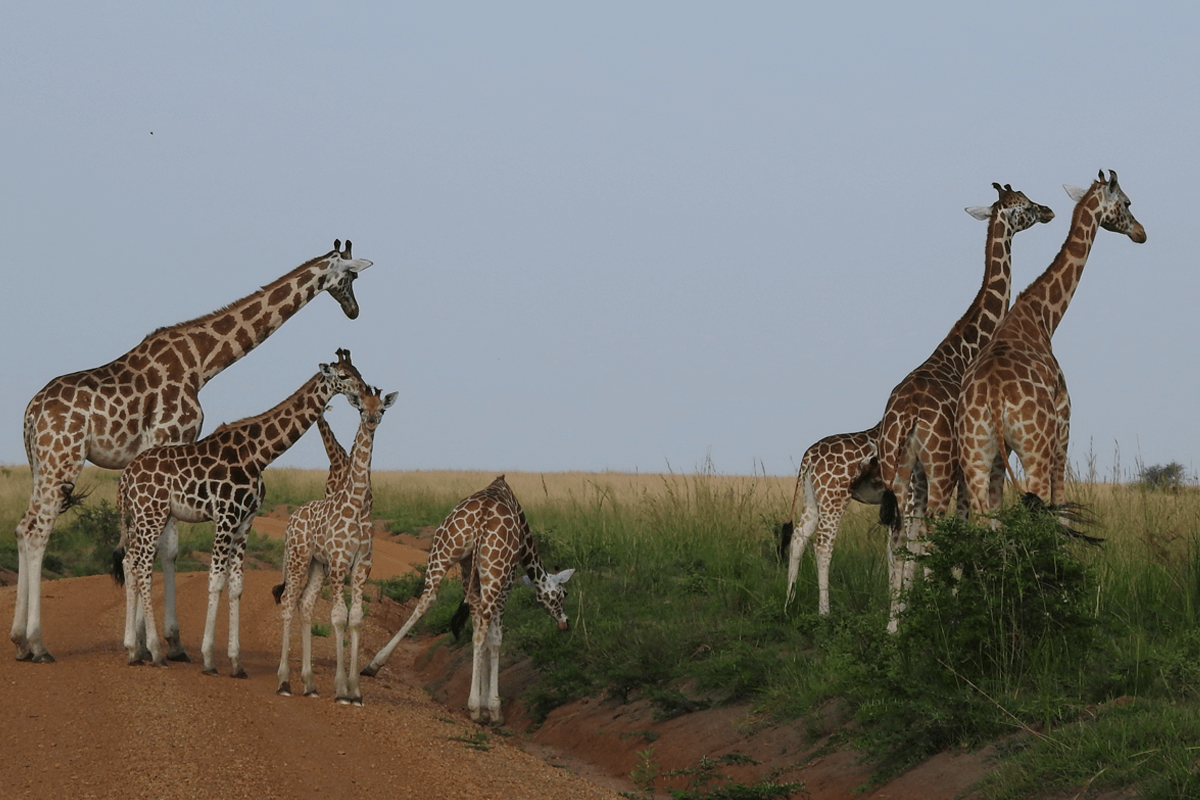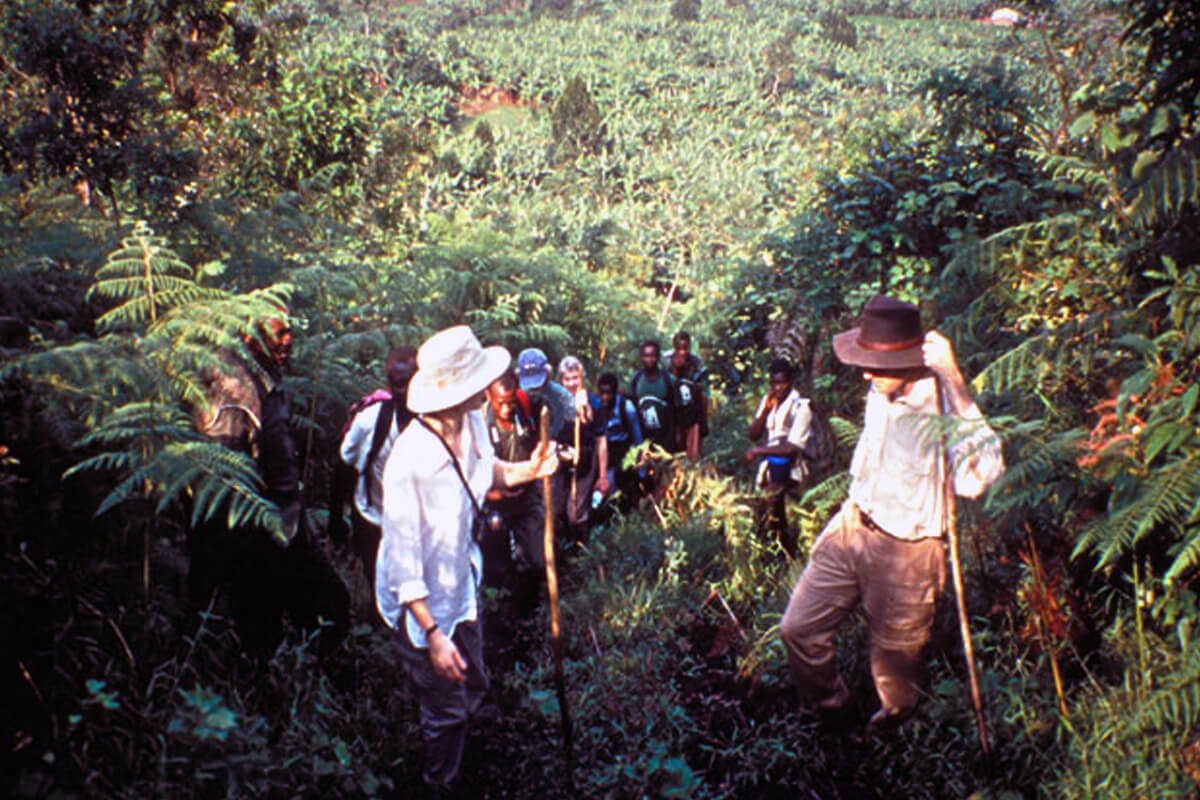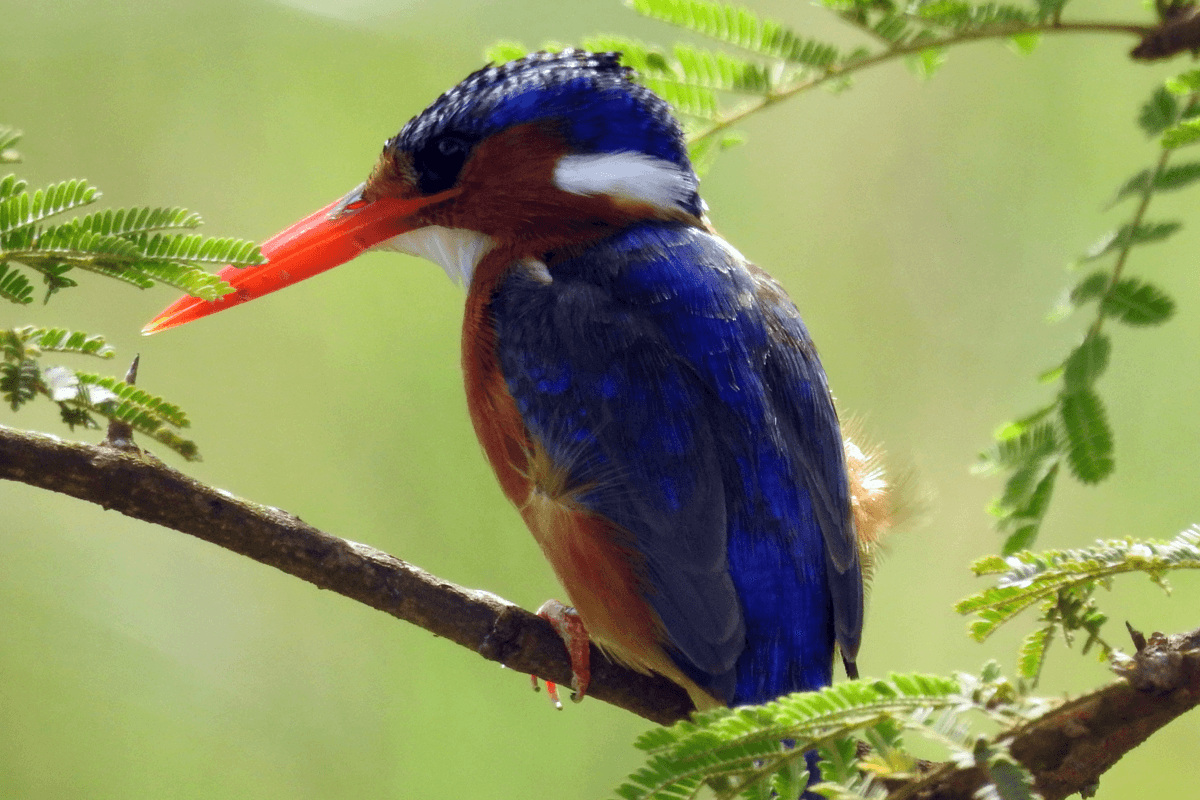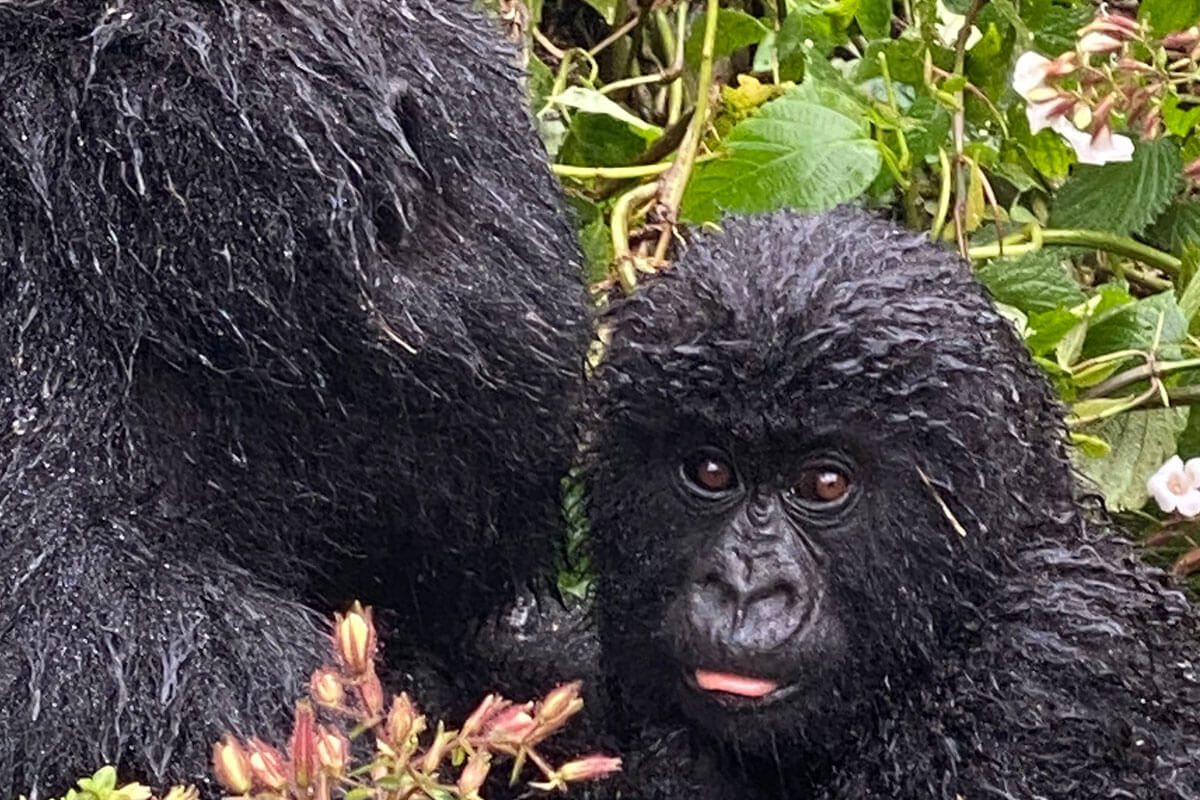Gorilla Trekking Safarais Info
Frequently Asked Questions
Here are the answers to some of the common questions our guests ask about Gorilla trekking safaris in Uganda and Rwanda. Read through the various sections, and should you have any further questions, just talk to us and we'll help you out.
The maximum time you are allowed to spend with gorillas is 1 hour. This doesn’t include the time you will spend hiking in the rainforest.
Generally, the whole activity of gorilla trekking will take between 2 and 5 hours, depending on how far into the forest your chosen group has wandered that day. If you would prefer shorter tracking, let us know and your guide will request the park officials to place you with a gorilla family that will be easier to find on that day.
If you want to spend even more time with the gorillas, you can choose to do gorilla habituation instead. It is a bit more expensive, but you get to spend 4 hours with a group of gorillas that are still being trained to get familiar with humans.
The dry season months (June-September & December-February) are generally considered the best times to go gorilla trekking in Uganda and Rwanda.
This is because the trails in the forest are slightly easier to navigate during the hike to see the gorillas.
Additionally, dry season months are ideal for other travel experiences such as mountain climbing, white water rafting and wildlife viewing in the savannah. This makes it ideal for most guests who want to see gorillas as well as chimps, lions, elephants, giraffes, zebras and more wildlife from the savannah.
You should keep in mind that the local climate of the high-altitude rainforests where gorillas live is generally wet all year round and the dry season doesn’t mean there is no chance for rain, but reduced chances on most days.
There are strict rules in place to protect both visitors and the gorillas. These typically involve maintaining a minimum distance, keeping your voice down, and avoiding any sudden movements.
Before starting your gorilla trek, the park officials will brief you on these rules and guidelines, and your ranger guide will ensure that you follow them during the gorilla trek.
Mountain gorillas can be seen in Uganda, Rwanda and D.R. Congo. Each country has its charge for a gorilla trekking permit.
- In Uganda, a gorilla permit costs 800 USD for foreign guests, and 700 USD for foreigners staying/working in Uganda.
- In Rwanda, a gorilla permit costs 1500 USD for foreign guests.
- In DR.Congo, a gorilla permit costs 500 USD for foreign guests.
Each permit is valid for the stated date, so if your plans change, make sure to communicate this with us ahead of time and we can find a way of transferring you to a future date. At Trekking Timmy, we help purchase the permit on your behalf so that you don’t have to worry about making errors.
Each gorilla family is open to only 8 visitors each day. This means that there is a limited number of gorilla permits at any time.
To make sure that your gorilla permit is bought and secured early enough, you have to start the planning of your trip months ahead of travel time – and pay for your gorilla permit at least 3 or 4 months before coming for your safari.
Having enough time ahead allows us to try and get you the permits before they are sold out completely.
Seeing gorillas is a wonderful experience and getting your permit early leaves you with just preparing for your encounter with the gentle giants.
Gorilla trekking is generally demanding because it goes through dense rainforests, foot trails, and steep terrain and can be muddy in some sections.
The gorilla trek goes at the pace of the whole group and there are some places which are slightly easier than others. Being in good physical condition will make gorilla trekking easier for you.
If you need to prime yourself for gorilla trekking, start by taking some walks near your home and see how you would do on a 2 to 3-hour slow hike.
If you want to track the gorillas which won’t require much hiking, talk to your guide and they will ask the park officials to assign you the nearest group for that day.
The packing for each trip is quite different depending on the whole trip – and not just gorillas.
For gorilla trekking, you’ll want to pack sturdy hiking boots, long pants, a raincoat, insect repellent, sunscreen, a hat, some snacks (packed lunch) and plenty of water.
When you have a final itinerary, we often give you a packing list that takes into consideration the length of your trip, the time of year, the things you’ll do and your style of travel.
Mountain gorillas can only be seen in any of the following national parks in Africa.
- Bwindi Impenetrable National Park in Uganda.
- Mgahinga Gorilla National Park in Uganda.
- Volcanoes National Park in Rwanda.
- Virunga National Park in D.R.Congo.
Popular destinations include Bwindi Impenetrable National Park in Uganda and Volcanoes National Park in Rwanda.
Generally, you are required to have a yellow fever vaccination certificate to protect you and the gorillas from yellow fever.
Yellow Fever is an incurable disease that easily spreads from one person to another. It can only be prevented by vaccination. Yellow fever certificates are checked when entering the country.
Besides yellow fever, you should consult your doctor for professional advice. This can be about things like getting anti-malaria drugs, but also about your regular medication.
While gorilla trekking focuses on observing habituated families, there is a chance of encountering other wildlife. Your guide will be well-versed in local wildlife behaviour and safety protocols. Be sure to follow their instructions closely.
Most animals in the forest tend to be shy and unless you are very observant, you might not see them and they will keep their distance. But your rangers are there to help and assist you and your safety is a priority for them.
Yes, you can take all the photos and videos you want as long as you are following the guidelines of trekking and safety – not to disturb the gorillas and endangering yourself and others.
You will not be allowed to use the flash of your camera as this can scare the gorillas and lead to unpredictable behaviour.
As with all wildlife, the animals won’t pose for you. It is better to practice and be well-versed with your camera system so that you get as many good pictures as possible. A zoom lens will help you capture the pictures even when you are are a distance.
A zoom lens is ideal for capturing close-up shots of the gorillas while maintaining a safe distance. A weatherproof camera case is also recommended, as the trek can involve muddy or wet conditions.
Most modern cameras will work for you as long as you have the correct lens and you know the basics of photography very well.
Because of the thick forest canopies, the dynamic range of the scenes is going to be continuously changing. Practising with such conditions will help you better utilize the time with gorillas.
Finally, remember to put down the camera and take in the fact that you are chilling with one of the 1000-ish gorillas left in the wild. Pictures are good and worth it, but being present at the moment is something to take in at a deeper level.
What you pay for a gorilla permit is a contribution towards the conservation of gorillas. That money goes to protecting the park, doing research, conservation education and developing the local communities.
A percentage of the money collected from the national parks is often directly put back into the local communities to support things like local hospitals, schools and other community projects.
Beyond what the government is already doing, travelling with a local company that is committed to responsible tourism will extend your impact further. We use locally owned lodges and hotels, and local guides and we tailor our safari activities to be good for the guest, the earth, and the locals.
Many gorilla trekking destinations are located within National Parks teeming with diverse wildlife. Depending on the park and your chosen tour, you might have the chance to see chimpanzees, golden monkeys, elephants, and a variety of bird species.
Absolutely! Many tour operators offer itineraries that combine gorilla trekking with other adventures, such as visiting local villages, exploring volcanoes, or wildlife safaris on the savanna.










